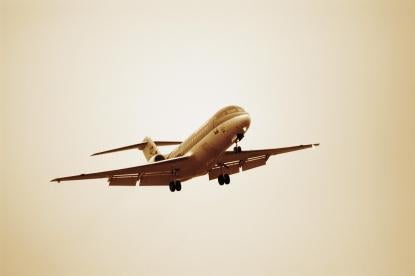FAA Deputy Administrator Michael Whitaker told House members last week that the agency is expecting to finalize its rule on small drone operations by June 17, 2016. While this timeline is earlier than many expected, the FAA failed to meet the September 30, 2015 deadline initially set by Congress in a 2012 law. Still, the announcement was welcome news to drone enthusiasts and hobbyists – as many as one million drones are estimated to be purchased by Christmas this year.
Whitaker testified at a Wednesday hearing before the House Transportation & Infrastructure Subcommittee on Aviation, along with James Hubbard, the Deputy Chief of State and Private Forestry at the United States Forest Service, Captain Tim Canoll, President of the Air Line Pilots Association, Rich Hanson, Director of Government and Regulatory Affairs at the Academy of Model Aeronautics, and Dr. Mykel Kochenderfer, Professor of Aeronautics and Astronautics at Stanford University.
The hearing was focused on the growing use of drones for non-commercial and recreational purposes and the need for drone safety regulations. Sightings of unmanned aerial systems (UAS) by commercial pilots are on the rise and have created a new layer of risk for passenger aircraft safety. According to the FAA, more than 600 drones were reported by commercial pilots in 2015, up from 238 sightings in 2014. Captain Tim Canoll demonstrated to hearing attendees through a video how difficult it is for pilots to detect a drone while in-flight. “These are dense metal pieces that will wreak havoc on an aircraft,” he said. “When it hits a transport category aircraft, when it hits one, there is going to be a significant event.”
James Hubbard of the U.S. Fire Service also indicated an uptick in incidents between firefighting aircraft and drones, with 21 drone incursions in firefighting airspace in 2015, up from only 2 incursions in 2014. While the Forest Service implements UAS in its firefighting tactics, incursions from other UAS users impedes their ability to battle wildfires and presents a threat to their firefighting crews.
Whitaker noted that one of the biggest challenges to enforcement is locating a drone operator. Current technology allows the FAA to see where a drone is located, but not where the operator is located, which limits their ability to penalize bad actors.
All witnesses agreed that education can play a major role in risk reduction, especially for the new UAS users who might not be familiar with aviation policy or FAA guidelines. Canoll suggested outreach to these individuals at the point of sale to provide flight information. The idea of creating a national drone database by having consumers register their UASs was floated, but Whitaker said it might be too difficult for the FAA to confirm the identity of purchasers and users. Geo-fencing, using GPS to create geographical boundaries, setting manufacturer limits on UAS systems, or the installation of a “kill-switch” mechanism to immediately shut down a drone are ideas that were also discussed, but the hearing witnesses did not commit to any one of these suggestions as a concrete solution.
Whitaker also announced at the hearing that the FAA would be participating in a research partnership pilot program that will deploy new private sector technology to detect radio signals from drones. The FAA is looking to test the effectiveness of the new technology at U.S. airports. Whitaker explained that radio detection would enable the government to track down any drone pilots flying within a 5-mile radius of airport runways, and the pilot program will allow the FAA to test the technology in conjunction with existing airport operations and safety procedures.
Overall, witnesses and committee members stressed the importance of pursuing a balanced approach to the problem, so as to not unnecessarily restrict the growth and development of UAS technology, the new frontier in aviation which has enormous potential for manifold application.



 />i
/>i


